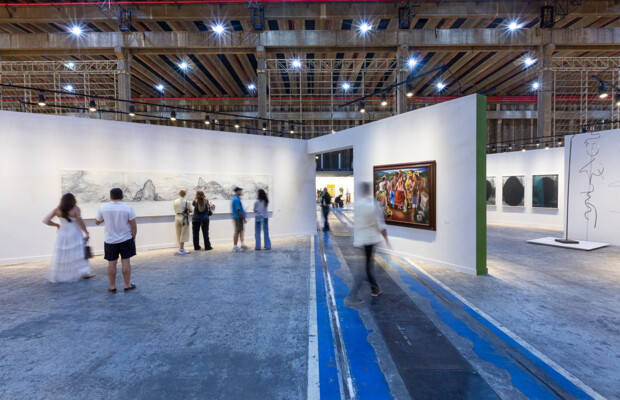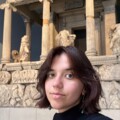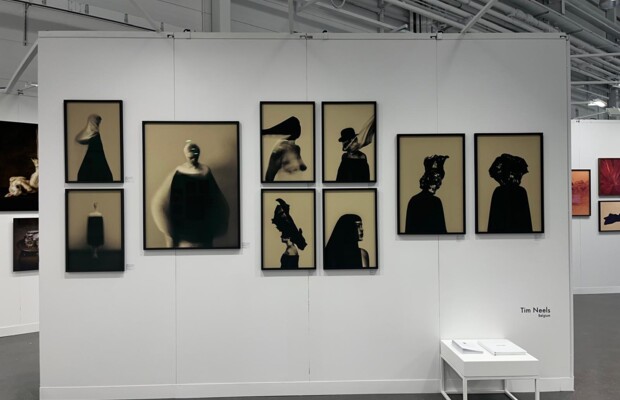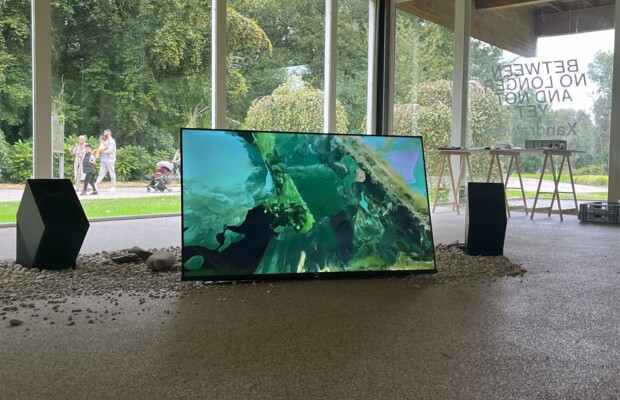Behind the scenes of the All African People’s Consulate: a talk with curator Paul Bright
It frequently happens to stop in front of one of the events the Biennale brings to Venice and feel stunned. Sometimes, it doesn’t happen right away: perhaps you see something interesting, but only after investigating the environment and reading the panels are you fully able to understand what is actually happening there. And then you feel amazed, or aghast, or something in between. The truth is, that you’ve been hit by an unconventional thought, something provocative, something different and probably very strange, that never crossed your mind before. After all, that’s what we expect from the Biennale.
If you happen to walk into the Castello Gallery during the 60th Venice Biennale, you won’t feel those things. You will enter a white and comforting space, with a desk and a person sitting behind it, some chairs, and a few people chatting around. On the wall behind the desk, a flag is hanging: it has a red background and a yellow and green circle, at the center of which stands the African continent; you probably won’t recognize the flag, because it’s a creation of the artist. The person at the desk will ask your name and write it down at the end of a list, then kindly invite you to sit down and wait for your name to be called. While patiently waiting on your chair, you will notice that every now and then a door opens, and someone comes out: sometimes it’s a staff member, sometimes it’s a visitor just like you. When they finally call your name, you get to enter that door and sit at a tiny desk in front of the person who called you. The conversation starts: they ask you some questions about your bond with the African continent, if you have ever been there, if you have African origins or relatives; you get to talk about yourself and maybe confront each other on your beliefs and knowledge about Africa. It all happens in a very friendly and relaxed environment.
Anyone who has ever been to a consulate before knows that the experience is very different. At some point, you’re asked for your personal information, which will appear on the document, and they let you out. Congratulations! You got your All African People’s Community passport or visa, depending on whether you have African origins or not.

Apart from the gadget, which looks quite real and is very cool to bring home, what is this Consulate about? What is its purpose?
The All African People’s Consulate is a conceptual artwork conceived by Dread Scott and curated by Paul Bright, co-organized by Open Society Foundations and The Africa Center, with support from Cristin Tierney Gallery, Wake Forest University and Art Events. As mentioned in the exhibition statement, it works as a functioning Consulate for an imaginary Pan-African, Afrofuturist union of countries, promoting cultural and diplomatic relations. After a 35-year career of art-activism, Dread Scott has landed on a new, innovative project, once again bringing attention to the theme of racial justice.
The artist imagined «a union of African countries that would protect the rights of its citizens to freely move around the world» and the Consulate operates to facilitate people’s entry into the community and its territory. As an act of inversion, he invites us to rethink the conception of the African continent and its people as something different from what the media depict nowadays.
I had a chance to speak with the curator Paul Bright about the conception and realization of this work, and his idea of the curatorial practice.
Ilenia: How did your collaboration with Dread Scott start?
Paul: Maybe three years ago a colleague suggested to Cristin Tierney that we should bring Dread to the Wake Forest University campus to speak. Whenever we discuss an artist’s visit, I look for ways to show their work. So very quickly we began talking about an exhibition of Dread’s work, and then about how the nature of his work might be a good fit for a Biennale proposal (in 2017 I worked with Cristin Tierney and another of her artists, Tim Youd, to organize a Biennale-adjacent performance at WFU’s Casa Artom). Two years ago I met Dread at the Biennale to discuss initial ideas and approaches. A year ago Dread, Cristin and I talked about using Casa Artom, previously the US consulate, as a venue, but for a variety of reasons that didn’t work out. What Dread did retain from that was the idea of creating a sort of real consulate for a fictional, Afro-futurist consortium of countries, which is exactly what we’ve created in Venice as part of this year’s Biennale. Interestingly, Dread’s project was conceptually defined even before Pedrosa’s theme of “Strangers Everywhere” was announced. We all thought that was propitious!
I: What impressed you the most about The All African People’s Consulate?
P: A lot of conceptual-performance art still relies to a great extent on the mystique of the artist. I argue in the curatorial statement about the AAPC that Dread is different in that he has a directness about his projects, he really demystifies things by inverting or flipping them. So his work White Male For Sale is a video of a white guy on an auction block on a NYC street, subsequently sold as an NFT at Christies. Everything about the project is simple, in a sense, but very pointedly returns our attention uneasily to the notion of buying and selling human beings, updating it in the commercial modus of our time. It just whips our heads around. And yet Dread is not front and center; it’s not about spotlighting him.
The AAPC is a clear example of flipping things. You go there. It has the trappings of an actual consulate. But the ambience is much better. You are met by congenial Black staff members. You are truly welcomed. You have a conversation with them, not an interview or interrogation. The assumption is that everyone who’s there wants to be there, and they want you to be there.
And if you are from Africa or part of its diaspora, you will likely get a passport. If you aren't, you are still welcome, but you can only get a visa. This, combined with the pleasant and efficient process, is truly a reversal of the norm, whereby Africans typically have a difficult time trying to obtain visas to come to Europe and are often denied, even at high levels.
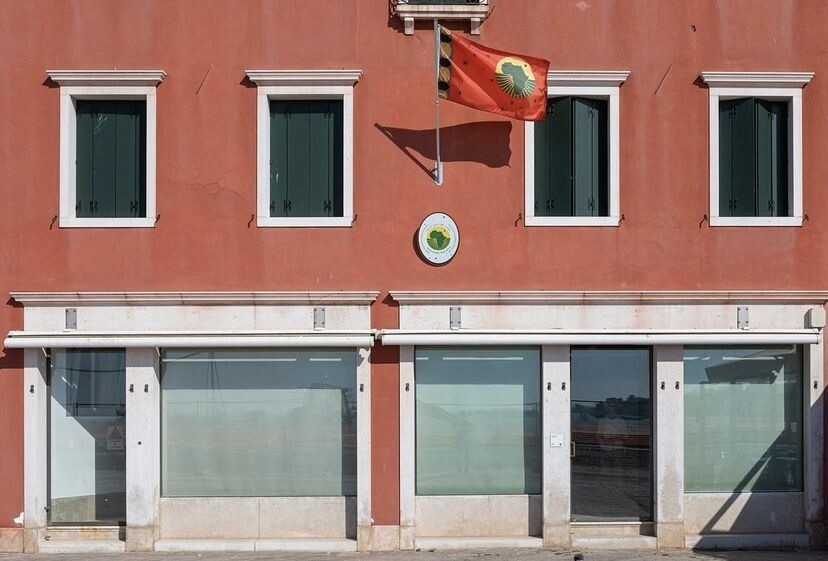
I: For the people not familiar with curatorial practice, could you expand on the role of the curator in the art ecosystem?
P: Ha! Being a curator can mean very different things under different circumstances. There are other kinds but I’ll stick to exhibition curating. Curators of contemporary art are often but not always affiliated with institutions, and they are the interface between the institution and the artist, which can be a fraught space. Curators are typically charged, to varying degrees, with selecting the work to be shown, articulating the reason for showing the work, working with PR and media, educators, designers, art handlers, shippers, writers, outside galleries, and are often involved in promoting and fundraising. Directors of small commercial galleries also function as default curators. There are independent curators that may or may not have ever been affiliated with a museum or gallery. There are artists who are invited to curate. There are poet-critic-curators like John Yau at Hyperallergic. So being a curator may not be a constant state or permanent role. But they are working in the service of making an artist’s work visible within a context - usually an “exhibition” - that they help to provide.
When working in tandem with living, contemporary artists, the role is collaborative, and relies to a great degree on mutual respect and a shared sensibility or vision of the work and the project. Working with Dread on the AAPC involved some of the interpretive parts we might expect, and that’s in my curatorial statement for the AAPC.
But in situations like this, working with a small team who have concurrent responsibilities with this project, a curator has several roles. My background is unusual in that I started as a museum preparator and framer, became an exhibition and graphic designer, and eventually began curating. So I see the enterprise more holistically, where design, for example, serves as an integral part of conveying the curatorial message.
Being a curator sometimes means not necessarily being the “definitive” expert on the work of the artist, but having a different understanding of the work that you can articulate through writing, and of course through the exhibition itself.
In the case of the AAPC, I like to joke that I spent half my time assembling Ikea furniture. But after the project was accepted for the Biennale and before we got to Venice, I spent a lot of time taking Dread’s designs for elements of the project and putting them into plans, elevations and views for approval. There are 15 or 20 pages of these, including things I designed, the exact disposition of the furniture in the space, etc. Once we got to Venice, Dread and I worked with the staff to train them for their roles. I recorded an interview and a panel discussion at the Consulate. For other projects I’ve created videos and exhaustively photographed them, written lengthy essays, and there’s always logistics - whatever the project needs. But curating the AAPC also returned me to the initial meaning of curate, which is “to take care of,” in this case, of the artist, the work, the project. You do whatever needs to be done within the scope of the project and your abilities. Curators can be the expected traditional academics and Phd’d museum curators. But increasingly they come from places outside the academic puppy mills. They can be artists without terminal degrees, specialists who weren’t art-trained, groups rather than individuals.
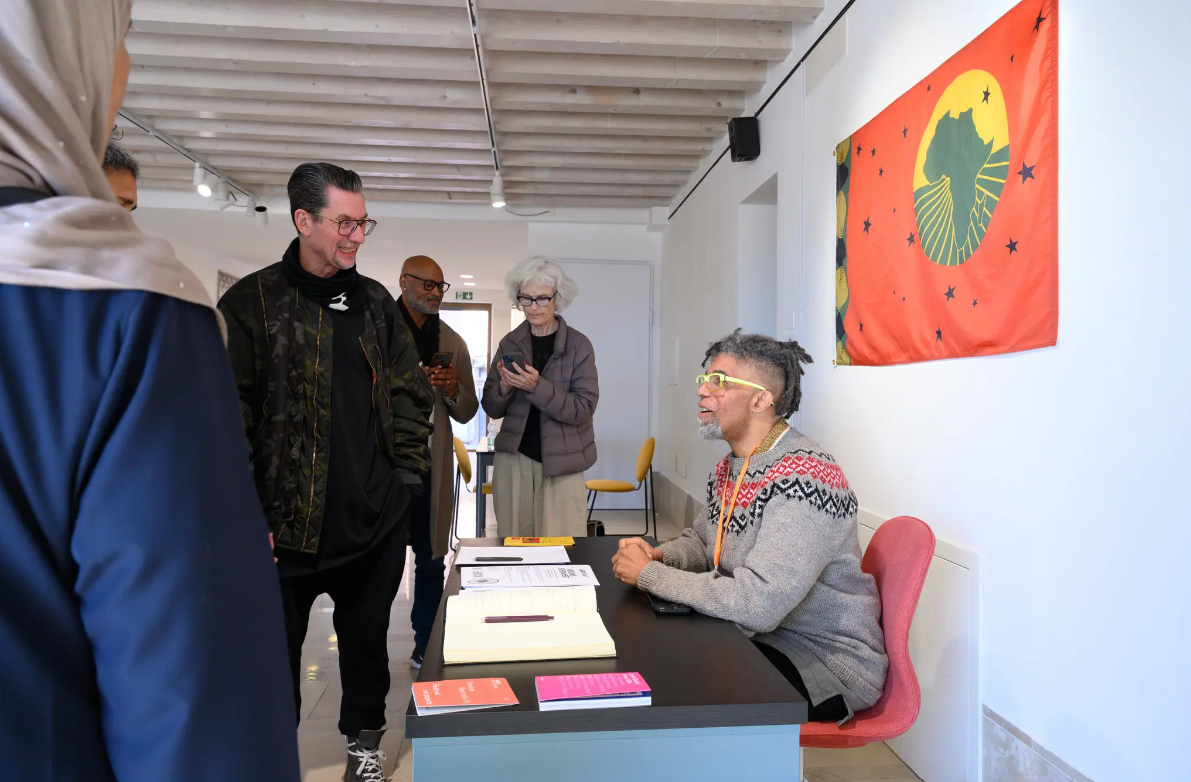
After 10 days from the opening, the Consulate had already issued "nearly 190 passports and 250 visas" and had soon become a gathering place for the black community in Venice.
The project sheds light on the difficult reality of Africans migrating to Europe, who are often denied a visa or residence permit, even after risking their lives for a better future. This topic has been at the core of the European political debate for years, ever since the immigration crisis first emerged. In Italy, it can significantly influence a person's political orientation, making it a matter of great concern. The situation is far more complex and intricate than it may appear. Therefore, I personally think that simplifying it into "good" and "bad" terms can sometimes be more damaging than beneficial, more divisive than unifying.
Nonetheless, I like to think that the goal of conceptual artwork is to make us think deeply, to take a few moments to challenge our established ideas and try to understand perspectives we never considered before or previously deemed wrong. And the Consulate works perfectly in doing so.
If you wish to visit this collateral event, you can find it at Castello Gallery (Castello 1636/A, 30122 Venice) until September 29, 2024.
Opening hours: Thursday-Sunday, 11:00-19:00.
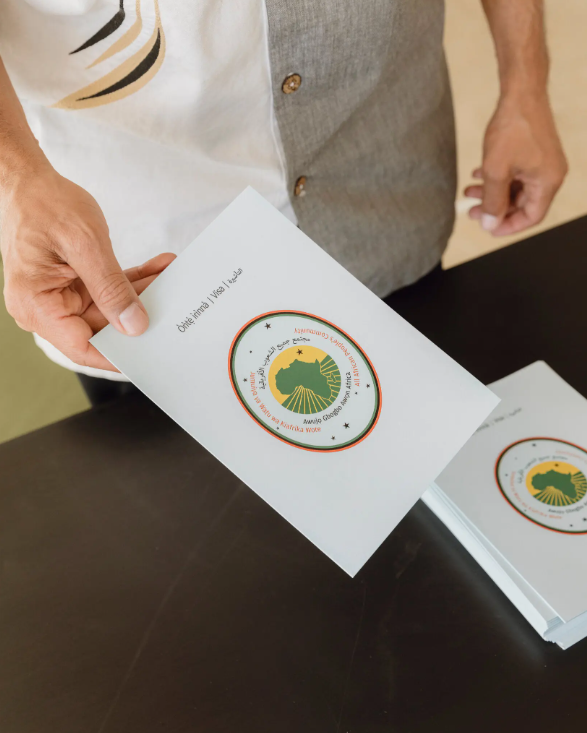
Share the post:

